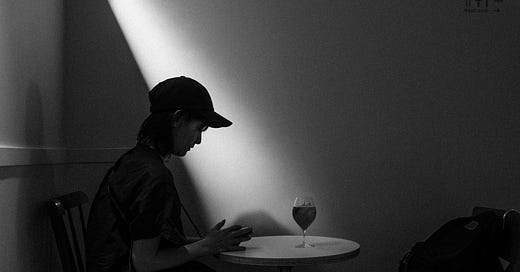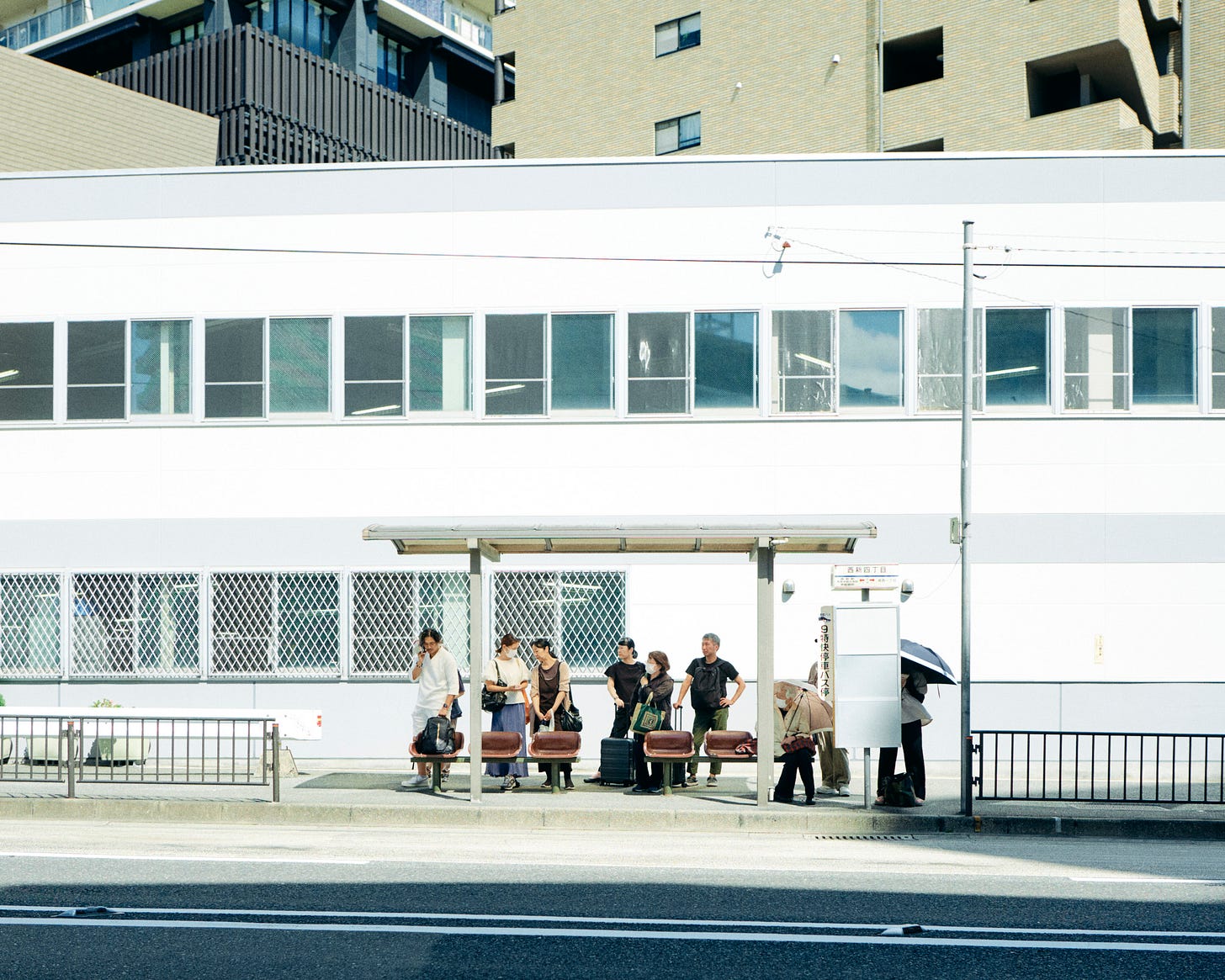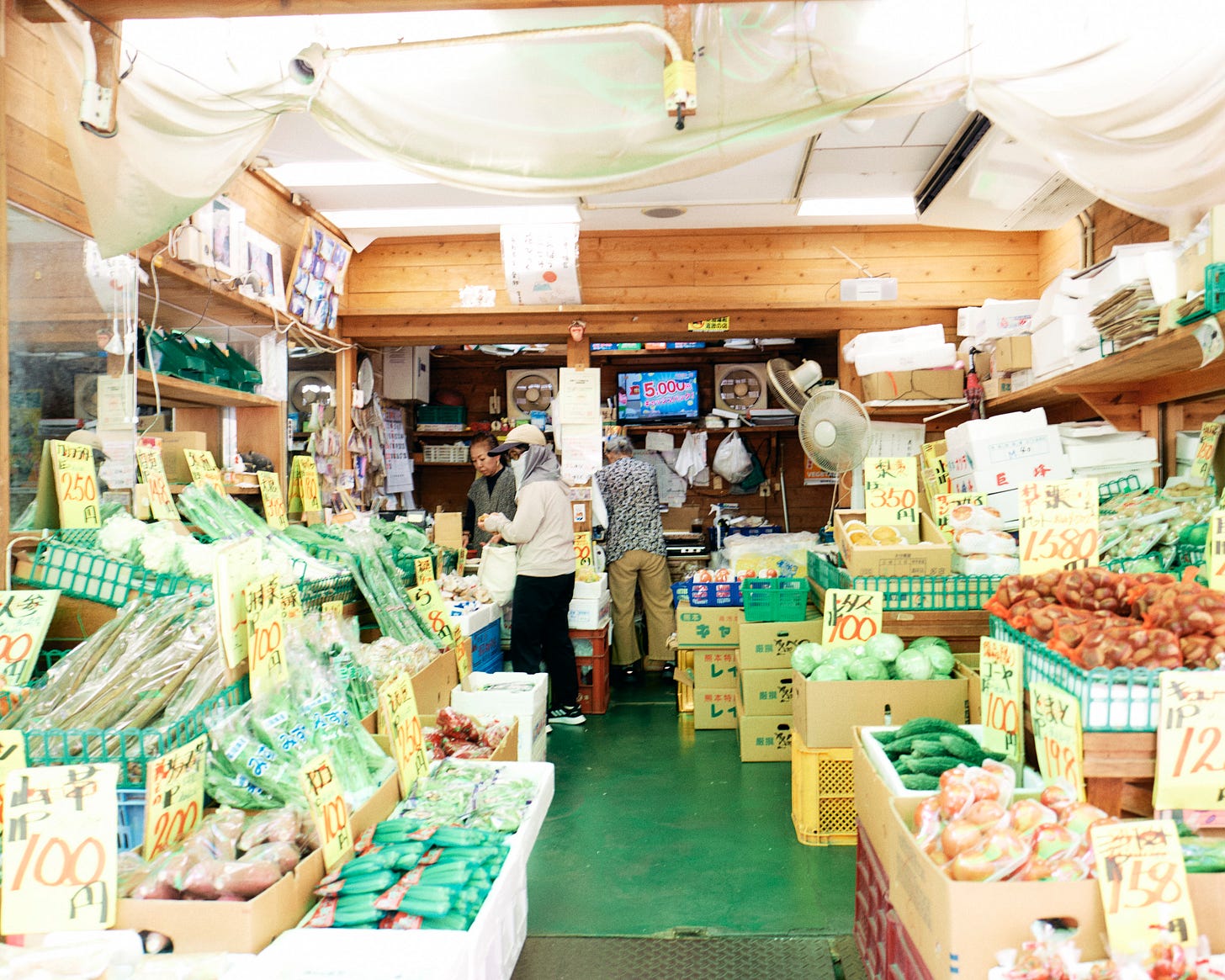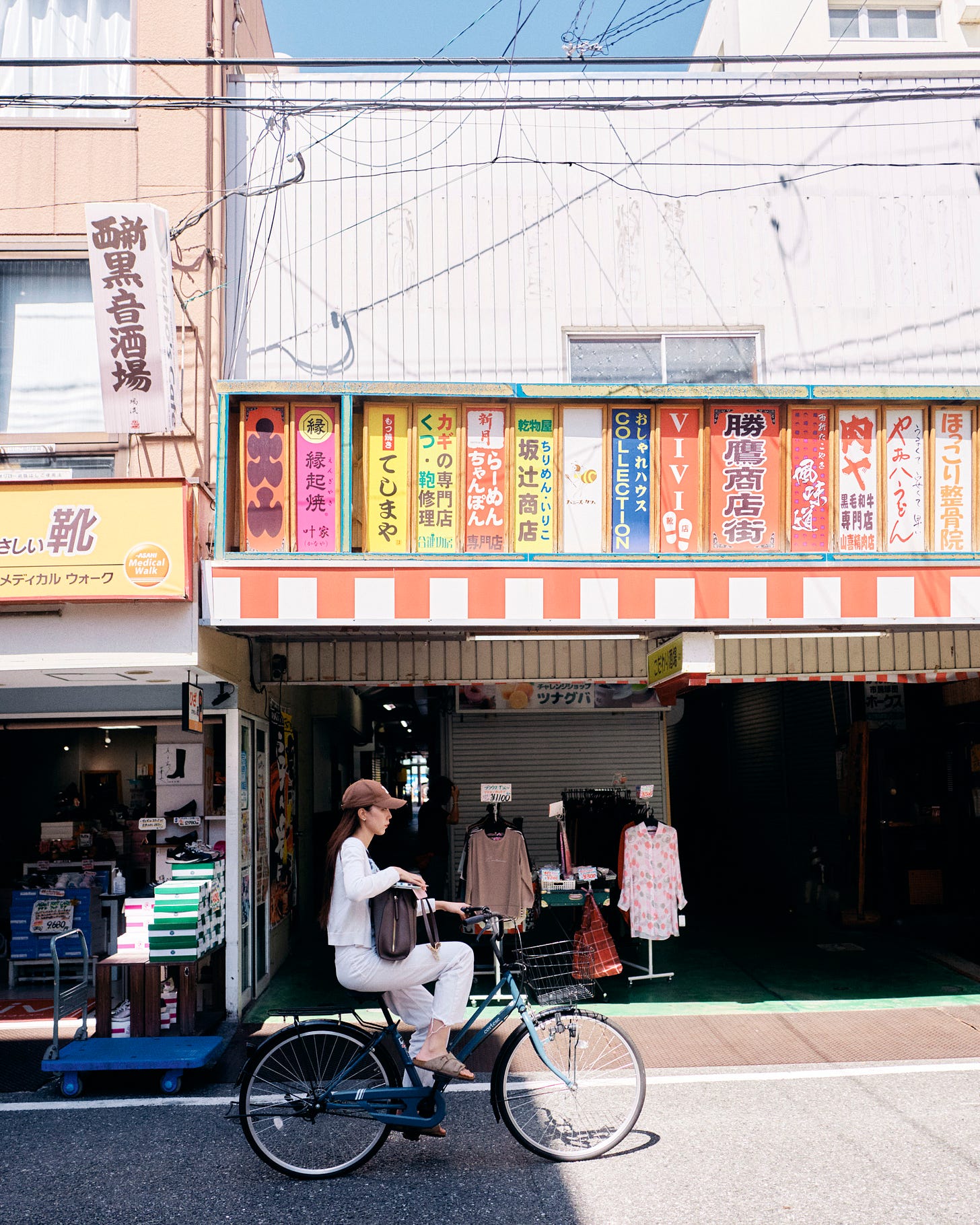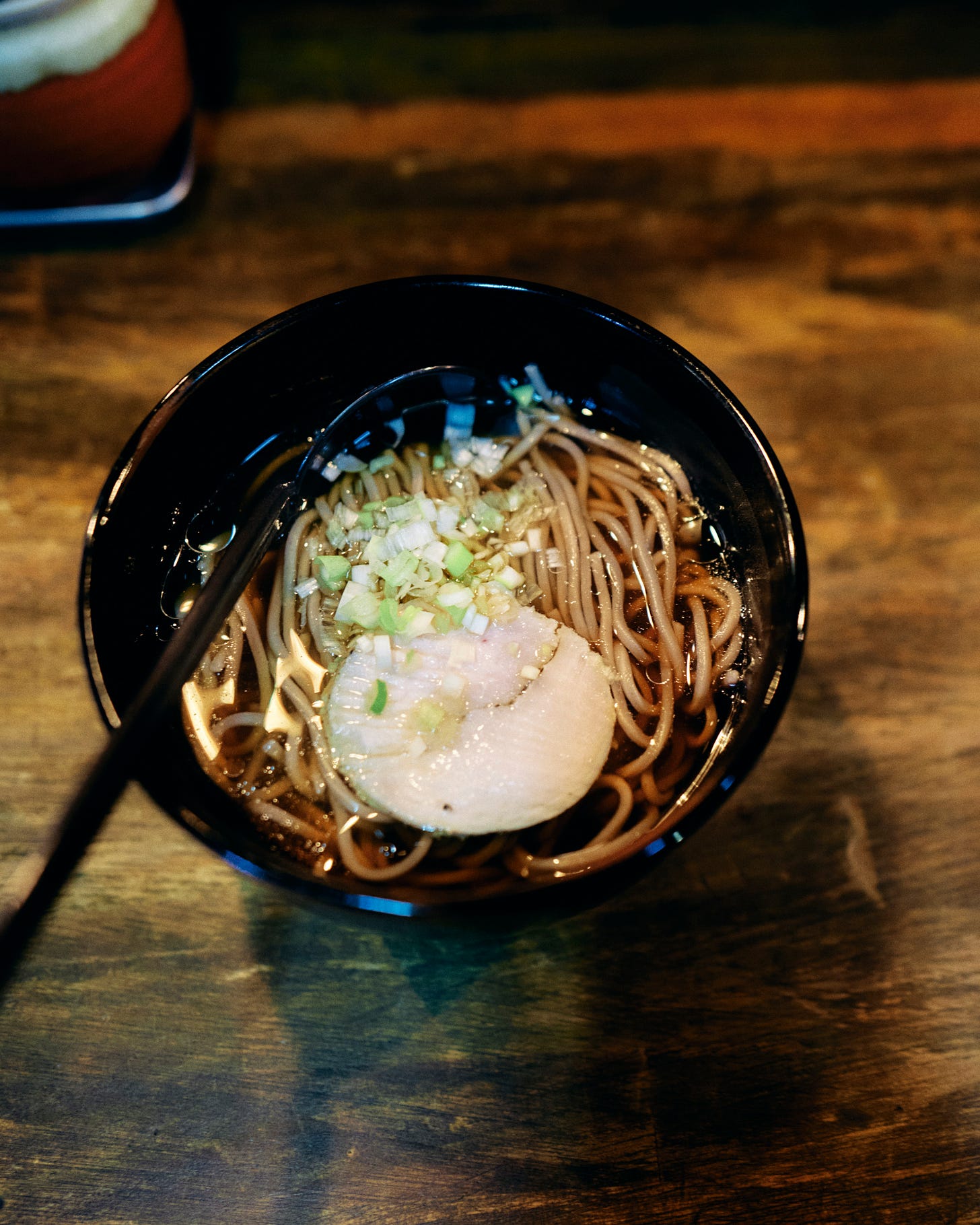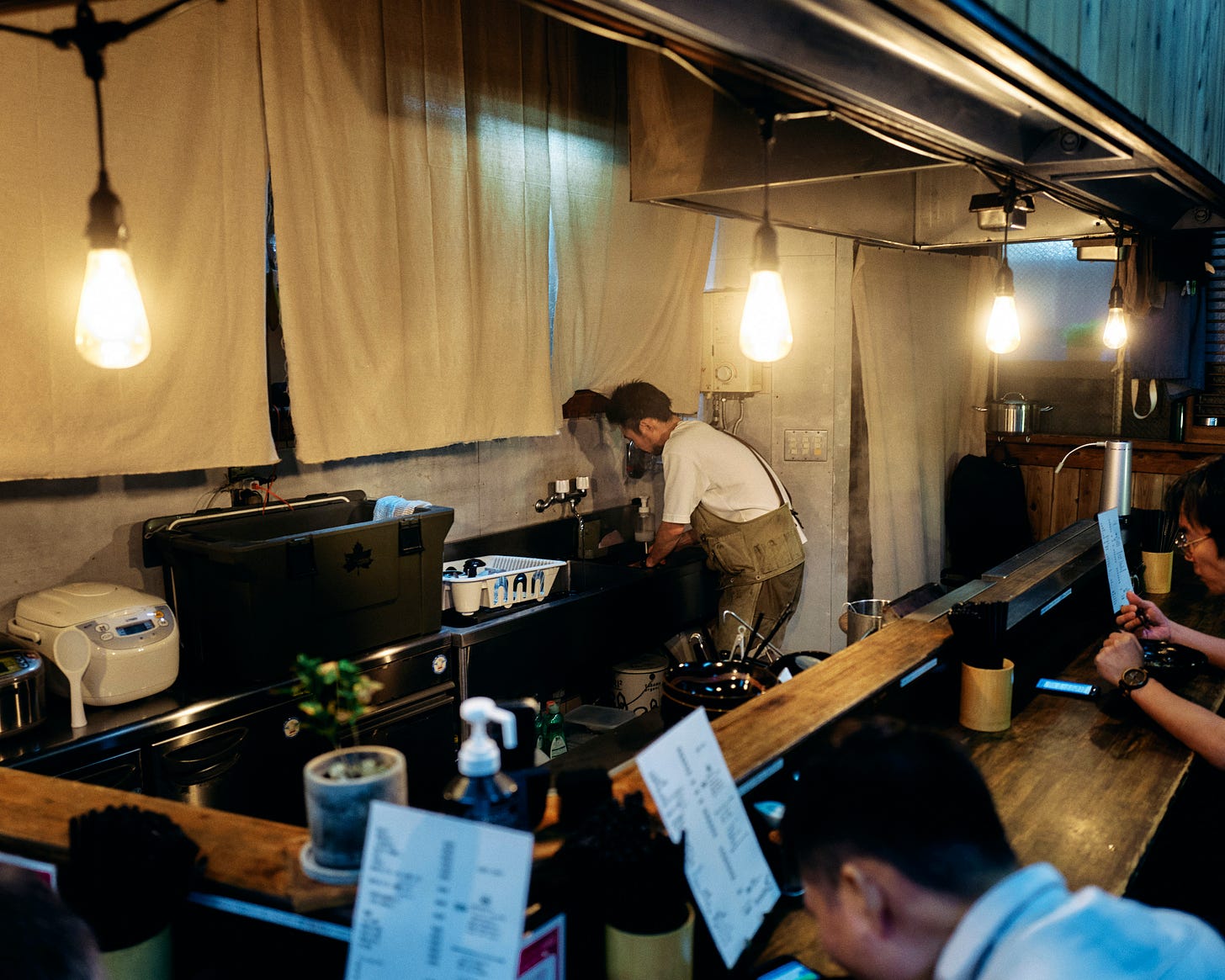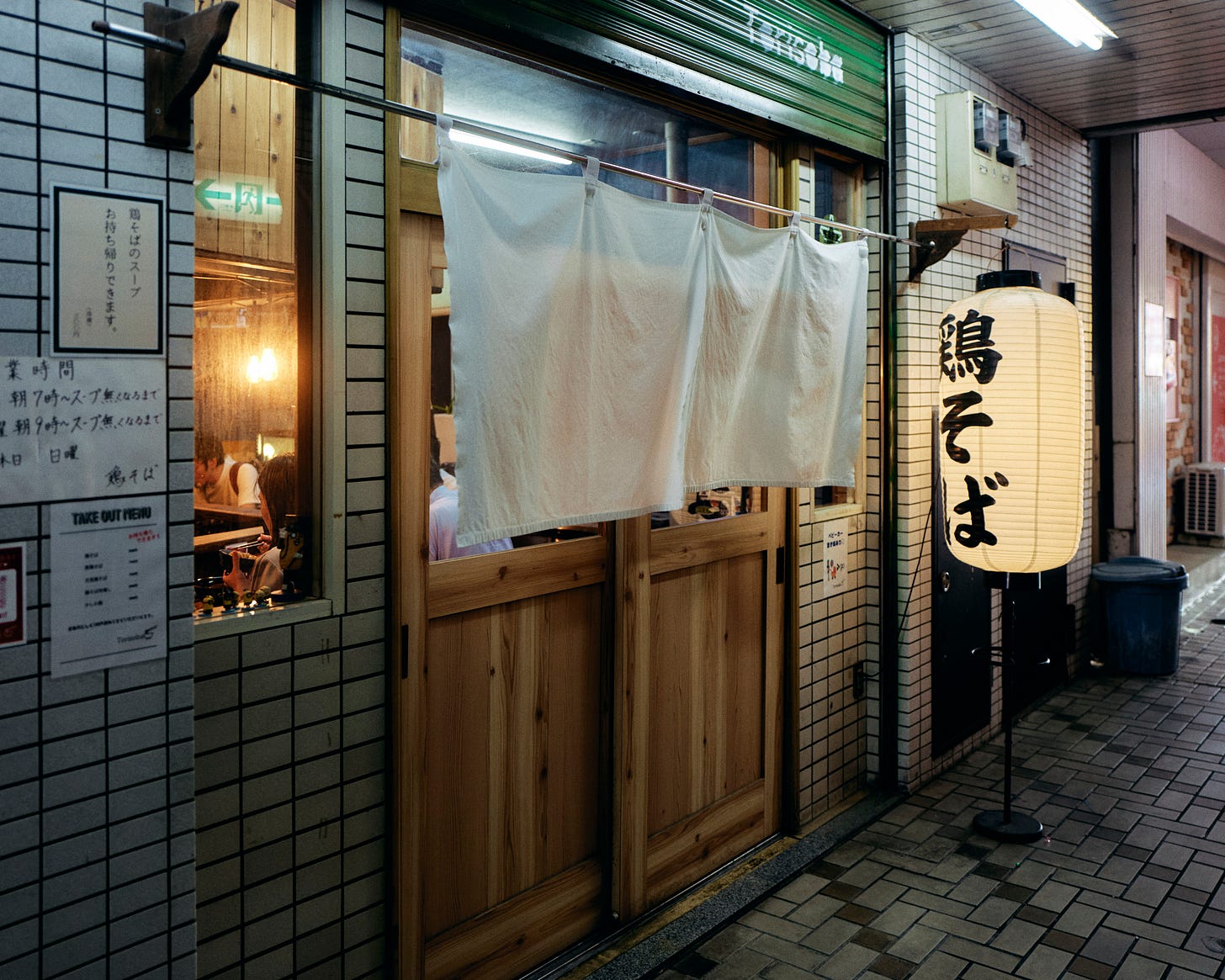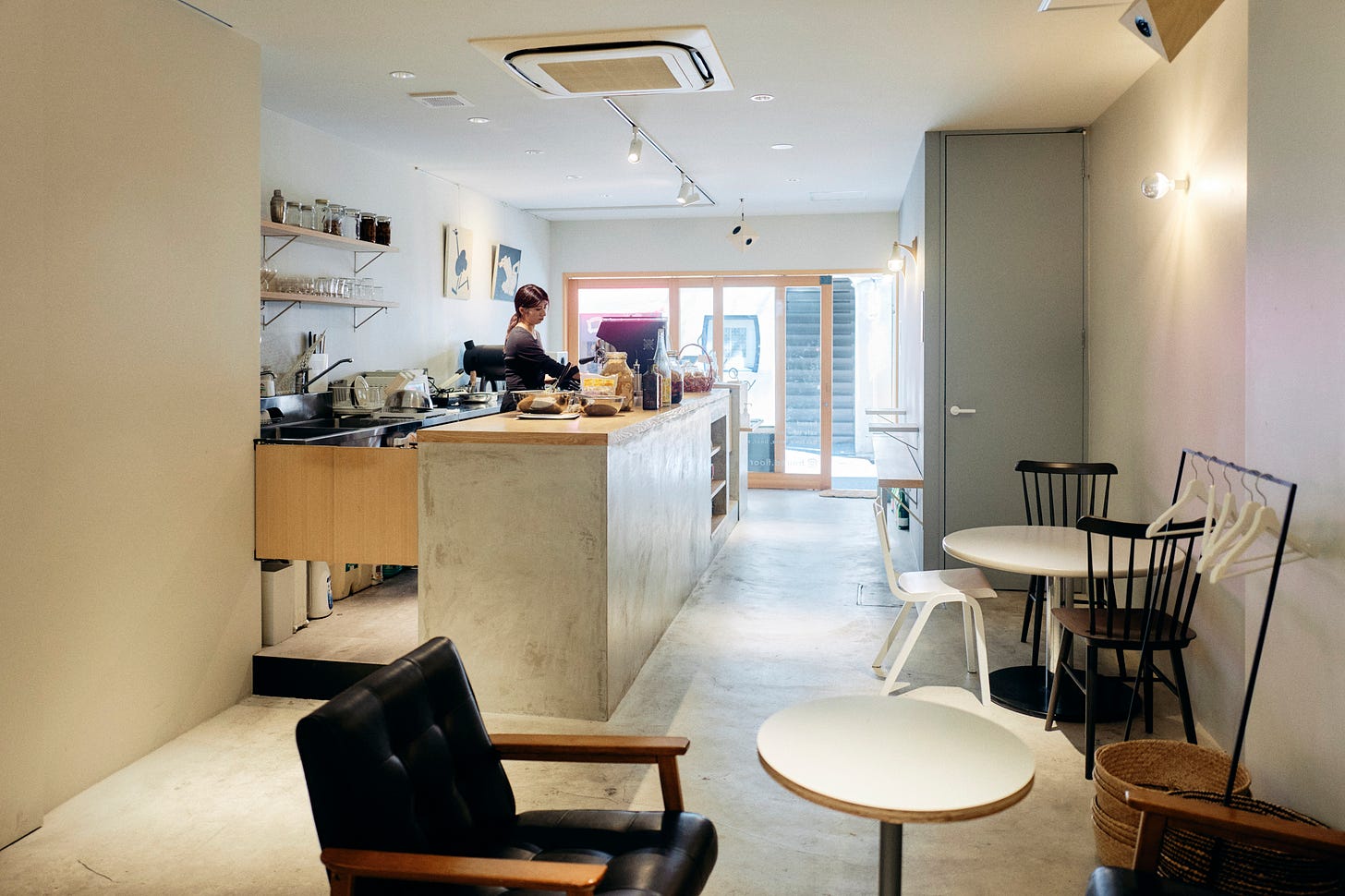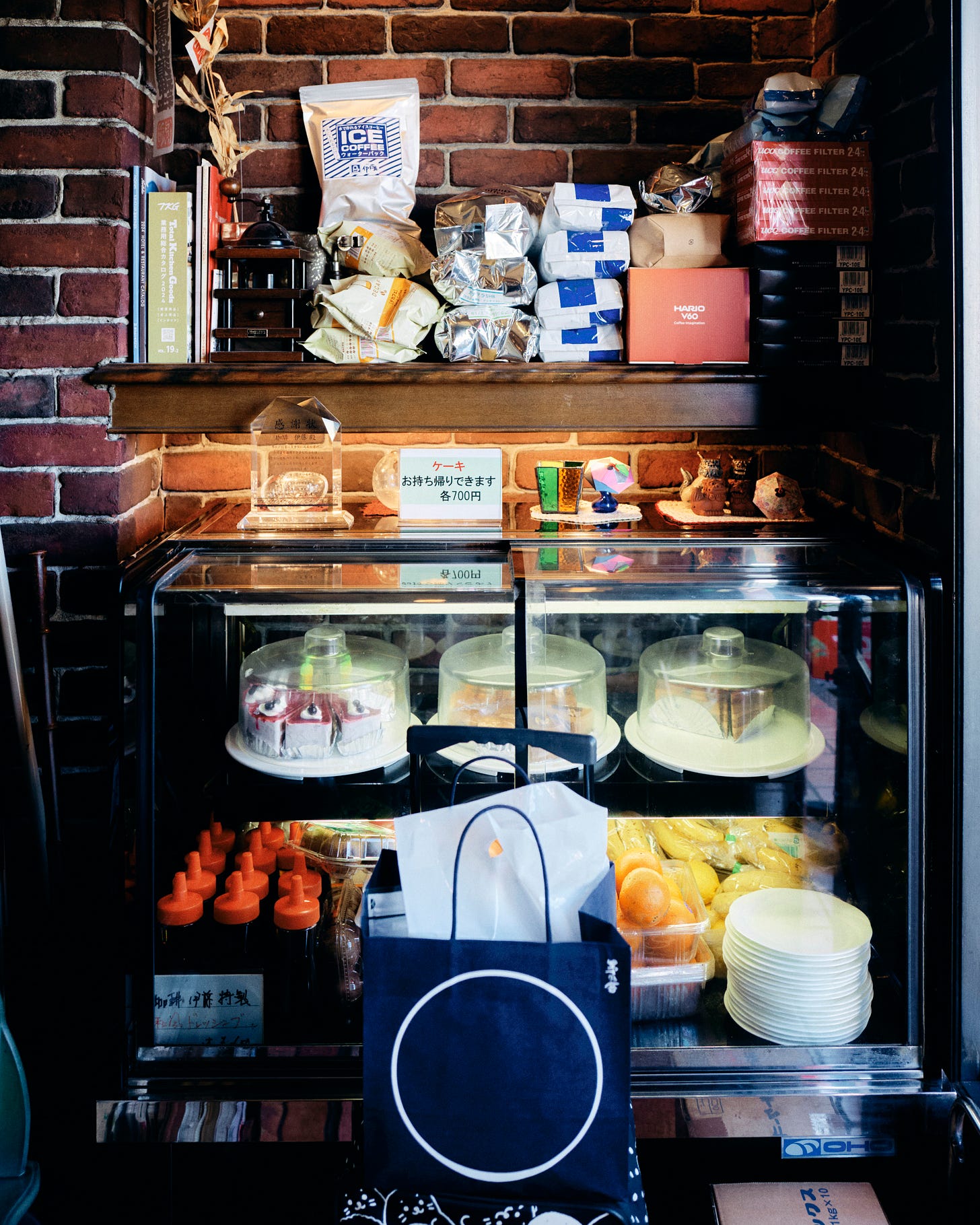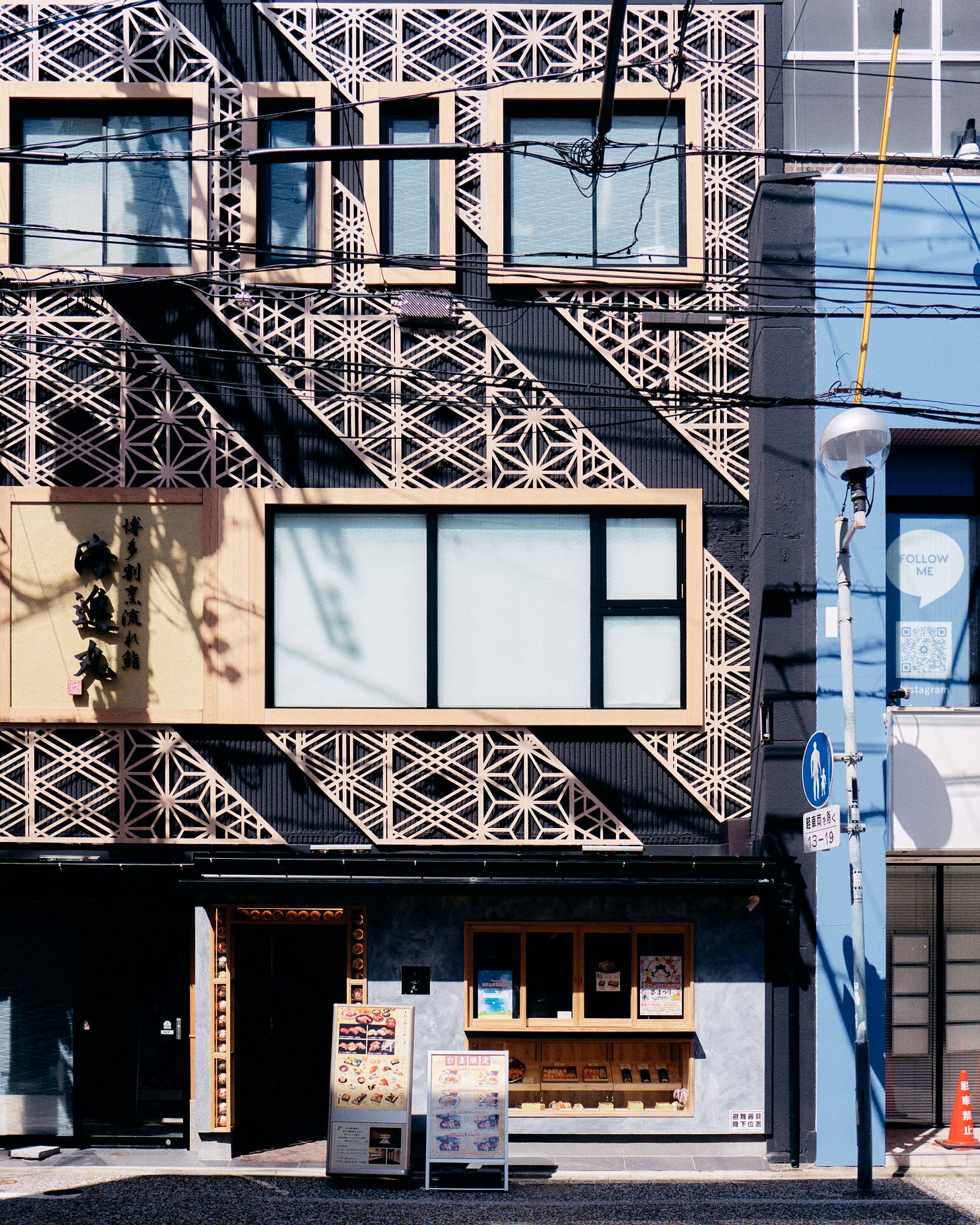Raw-Dogging Nishijin.
Chika told me she was going to meet a high school friend at Nishijin.
Did I want to go?
Dobby is allowed to leave home, no chores, a break?
She sent me a link to the restaurant.
Fancy restaurant! Dobby has not eaten yoshoku in ages!
And then I saw her face, and got the hint.
“I’ll … let you guys catch-up, and hang around the neighbourhood until you’re done,” I said.
“Really, you can join us if you want,” Chika said.
No, Dobby insists.
Once I sent Chika and her friend off (their restaurant is just above the station) I whipped out my phone, went straight to research.
Two highest rated restaurants, 香車 and 双喜紋 were within three-minute walk.
I picked the former as they specialises in chicken ramen.
Let’s talk while we walk.
Two stops from the city center of Tenjin, Nishijin (translated as the ‘new west’,) according to Japanese Wikipedia, is highly popular as a residential area due to its reputation as an educational district and its convenience and quality of life. It frequently ranks high in “Most Desirable Places to Live in Fukuoka City” surveys by media and real estate companies. The area also has many government housing and rental apartments for families on job transfers, earning it the nickname “The City of Transfer Workers.”
If we ever move to Fukuoka, we’ll eventually end up in an area like Nishijin.
I’ve been to Nishijin twice, and both times were to revisit Chika’s favourite pasta place.
So for the very first time, I was alone in this city-edge suburb, the Carlton of Fu-uck me, 香車 was closed for the day.
The reason: the owner was not entirely happy with the broth.
If you’re lazy, just say you’re lazy.
By the time I got to 双喜紋 inside a complex, I could hear the people behind the doors having a good time, but I for some reason, was just not in the mood.
Here’s the problem with knowing too much.
From my research, I knew what to expect, what to do order.
Exactly what was going to happen.
After fifteen minutes, I’d walk out with tonkotsu breath again, and wondered why I ordered the extra gyoza and fried rice. Maybe make another video, showing the same bowl of ramen, next to the same counter, same water jugs. Like those sci-fi movies which the main character just keep dying and repeat the whole process again.
Remember all my advice from the last two posts?
You know how they say “do as I say…”
I put away my phone, and decided to walk back to the main street like it’s 2004.
My final lesson, is that in the end, you just have to throw away the review sites and databases, and just be aware of the moment.
Since Nishijin is a mix of business and education, high school and university students like to hang out after school and be ‘adults’, getting shit-faced. There are not shortage of yakitori restaurants, izakayas, wine bars along the street. There’s a shop selling only takeaway giant sushi rolls. Bakeries, mochi, doughnuts, fried chicken … I assume during edo period, everyone was doing the same thing walking along the streets with sandals, no deodorant, getting along with life.
I saw a mini A-board with a ramen bowl - 鶏そば - tori (chicken) soba.
Perhaps I was already primed for chicken from the first shop that was shut, I followed the A-board, took a turn, into an arcade.
This could be Kaohsiung, Busan, Shanghai, Petaling Jaya, Cabramatta…
I looked at the menu, and couldn’t figure out if their soba was actual buckwheat noodles, or the new lingo for ‘ramen’. Through the window, I could see it was empty.
A tiny counter fitting eight at most, one man operation.
It was a high stake gamble, yet also very introverted.
Should I use my phone to confirm if this place was any good? No, raw-doggin like it’s 2004, remember?
As soon as I sat down, another university-looking man entered, followed by an auntie. They seemed to be regular, spending no time ordering, while I poured over my option.
In the end I went with a mini chicken soba with a mini 鶏飯 (keihan). 800 yen.
In hindsight I should’ve ordered the mini かしわ飯 (kashiwa meshi) instead.
Both translated to ‘chicken rice’, kashiwa meshi is staple dish in Fukuoka - mixing chicken, carrots, burdock roots with rice in the cooker. Yes, basically chicken 炊き込ご飯 (takigomi gohan) - the clean version of claypot chicken rice.
I did not take a photo of my 鶏飯, but it was the same as my soba noodles - in a bowl of white rice, topped with the same sous vide chicen slices, and a mountain full of bonito flakes.
The noodles came almost immediately.
Upon my first sip, I thought:
Ok, chicken soup. What’s so special about this?
Yet, slowly, like a character in a food manga, I kept going, first finishing the noodles, then pouring the rice into the soup, adding minced ginger and eventually, two empty bowls on the counter.
Upon reflection, the reason could be:
My body was craving chicken.
I’ve been eating ramen, cooking mapo tofu and pasta and Chika’s home, but maybe that was a little bit too much wok hei.
Chicken soup with soba noodles and rice, were a great reset.
Or, I was home sick as those profile was quite similar to the Singaporean / Malaysian Hainanese chicken rice.
Reason three, I’m getting old(er).
Or, it was just good food.
Don’t think so much.
When I left almost 20 minutes later, the shop was almost as packed as my stomach.
I walked out and started looking for dessert.
Coffee maybe.
With that, I was not as stressed out.
Just like any town that could be Kaohsiung, Busan, Shanghai, Petaling Jaya, Cabramatta… there’ll be a cafe that looks like this. I just knew it. I was half-deciding if I should go to an old-school kissaten, but this place fit the theme as it was empty, and all I wanted to do is to enjoy the real estate, and enjoy my ‘latte with less milk’.
Before the cafe, I also dropped by the bakery next door.
Chika’s friend gave us some manju (sweet buns) when we met, and in return we gave her absolutely nothing. Me being the professional househusband, knew I had to buy her something.
You know what, it was all a lie. I just wanted retail therapy. With or without the manju I’d be spending money anyway. The bakery was so tiny that it could not fit more than four at one time.

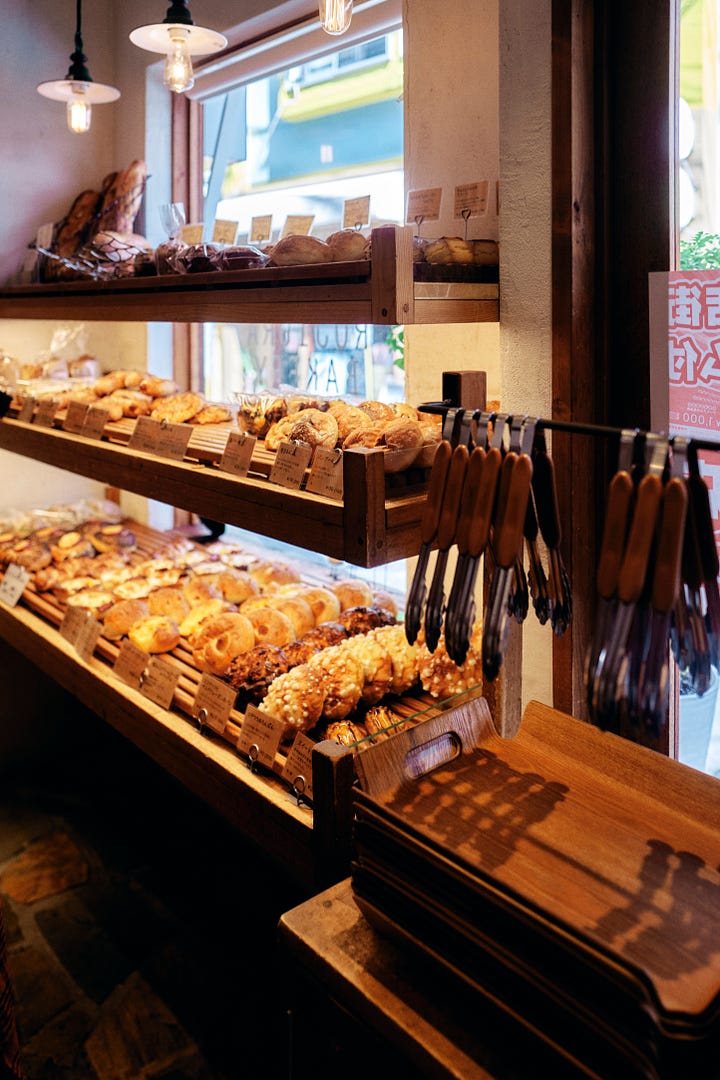
This was the best my ‘wide’ angle lens could capture. Left and right.
Around 1pm, they texted me and said they’ve finished lunch - do I want to join them at a kissaten?
It was like the culinary God was listening to my inner monologue and offered an olive branch.
Here’s the deal, when a local invites you to a place, and if you really want to be a local, do not refuse.
So even if I just had my latte, I walked out.
The last time we were in a kissaten, was in Tokyo, meeting a friend’s daughter.
I could not believe how hard it was to find a spot for coffee. Most shops required long queues, booking, some weird rules of ‘each person must order a cake and a drink’ or simply were not child friendly.
Even the kissaten we ended up frequenting, were charging 1000 yen for their dark roast coffee, and was extremely stand-off ish.
In contrast, Ito was ran by three senior citizens. Even though it looked like one of those pre-Starbucks Starbucks, powered by UCC beans, they were accommodating, menu wasn’t too bad, and lots of food options.
“I see you bought bread from Rojiura,” said the old man, waiting for me to order what eventually was ice coffee.
We did not order any food, but they did not try to kick us out.
In fact, they even served us konbu cha. Not the westernised fermented spore water, but the real 昆布茶 - kelp tea. Very left field, but once again, what the body needed - amino acid, salt, hydration.
At 2.50pm Chika’s friend needed to go pick up her kids from school.
I stood there thinking ‘so this is how it feels like’, looking at an alternate universal version of myself catching up with friends in Melbourne.
We did some shopping at the basement of the train station as Chika was making tempura for dinner, took the train back to the west.
Phone battery was still at 75%.

